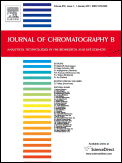“Modulating the activity of the endocannabinoid system influences various gastrointestinal physiological and pathophysiological processes, and cannabinoid receptors as well as regulatory enzymes responsible for the synthesis or degradation of endocannabinoids represent potential targets to reduce the development of gastrointestinal mucosal lesions, hemorrhage and inflammation.
Direct activation of CB1 receptors by plant-derived, endogenous or synthetic cannabinoids effectively reduces both gastric acid secretion and gastric motor activity, and decreases the formation of gastric mucosal lesions induced by stress, pylorus ligation, nonsteroidal anti-inflammatory drugs (NSAIDs) or alcohol, partly by peripheral, partly by central mechanisms.
Similarly, indirect activation of cannabinoid receptors through elevation of endocannabinoid levels by globally acting or peripherally restricted inhibitors of their metabolizing enzymes (FAAH, MAGL) or by inhibitors of their cellular uptake reduced the gastric mucosal lesions induced by NSAIDs in a CB1 receptor-dependent fashion.
Dual inhibition of FAAH and cyclooxygenase induced protection against both NSAID-induced gastrointestinal damage and intestinal inflammation.
Moreover, in intestinal inflammation direct or indirect activation of CB1 and CB2 receptors exerts also multiple beneficial effects.
Namely, activation of both CB receptors was shown to ameliorate intestinal inflammation in various murine colitis models, to decrease visceral hypersensitivity and abdominal pain, as well as to reduce colitis-associated hypermotility and diarrhea.
In addition, CB1 receptors suppress secretory processes and also modulate intestinal epithelial barrier functions. Thus, experimental data suggest that the endocannabinoid system represents a promising target in the treatment of inflammatory bowel diseases, and this assumption is also confirmed by preliminary clinical studies.”
http://www.ncbi.nlm.nih.gov/pubmed/26935536





